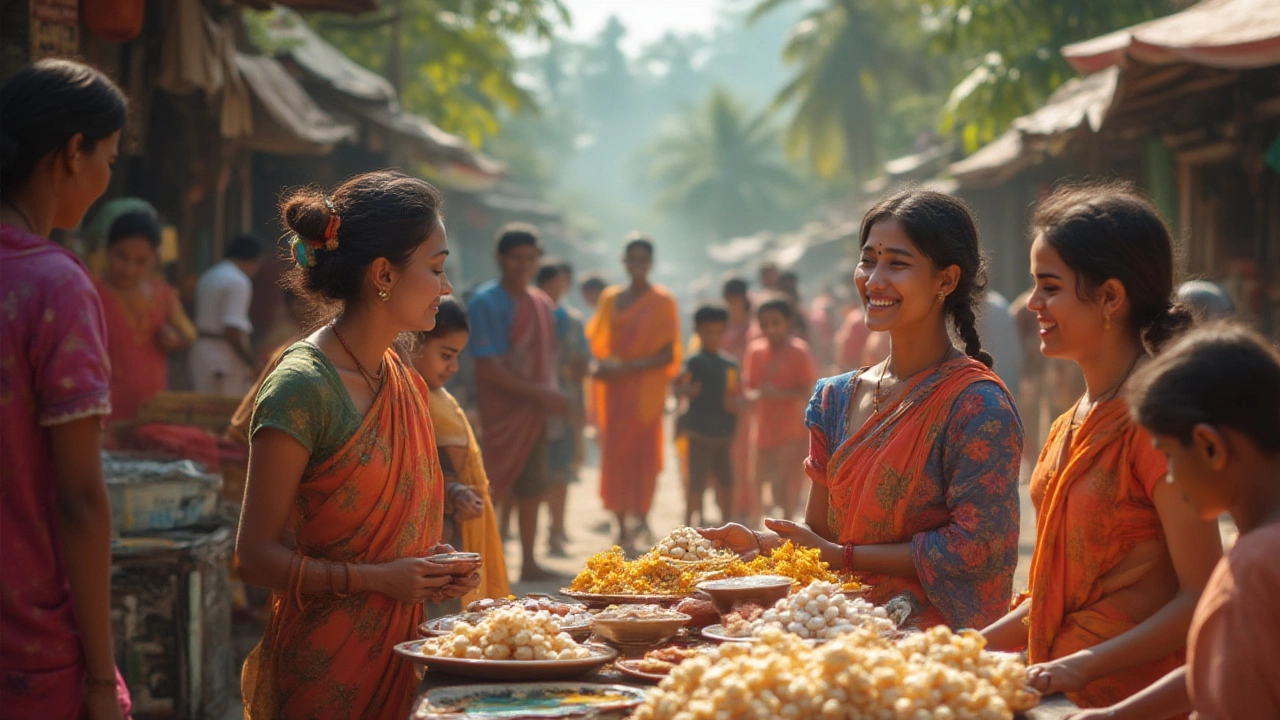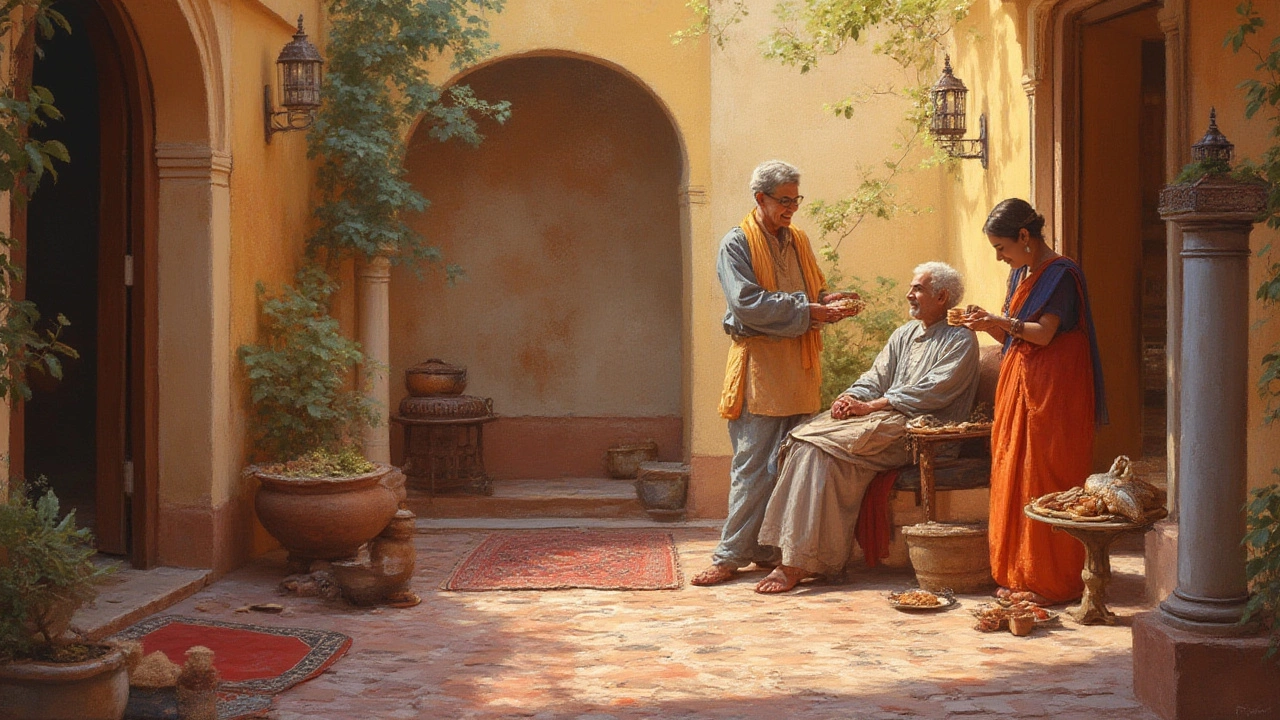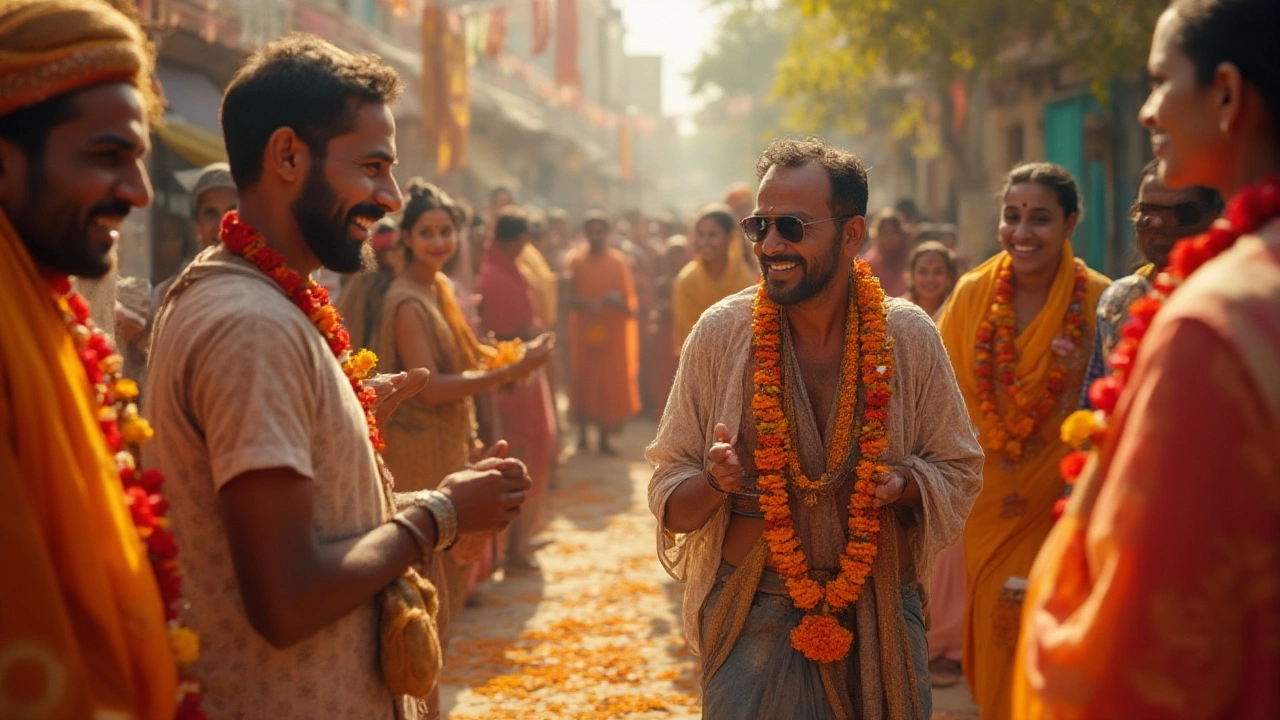There’s no shortage of tales about wild auto rides in Delhi, steamy samosas in Kolkata, palm-shaded serenity in Kerala, or bustling train journeys through Mumbai. But here’s a question guaranteed to start a fiery argument on any Indian train: Which Indian state has the nicest people? Not the loudest, not the most reserved—the genuinely warm, helpful, heart-on-sleeve type.
Think about it. India is 28 states, each with distinct languages, customs, everything. Yet, something connects them—the classic Indian welcome. Coffee invites on a street corner, neighbors who insist you join home-cooked dinners, strangers who help you with directions even when you don’t share a language. This isn’t a myth. It’s lived, every day. But the character of niceness, that signature hospitality, really does shape-shift depending on where you land.
The True Spirit of Indian Hospitality
Indian hospitality isn’t just something out of tourism brochures or Bollywood scripts. The phrase "Atithi Devo Bhava"—Guest is God—gets thrown around a lot, but here’s the thing: go to almost any state and you’ll experience real-world gestures that go way beyond mere politeness. Yet, some places, and some people, take this to a whole new level.
Let’s set the scene. In Rajasthan, you might get invited to a village wedding after a five-minute conversation in the market. Head to Kerala, and you’ll find houseboat owners who hand over homegrown bananas and fresh toddy not for a fee, but just so you “feel at home.” In Sikkim, neighbors turn every meal into a community lunch.
The data’s compelling too. According to the India Tourism Statistics Report 2023, Kerala and Sikkim receive the highest visitor ratings for local friendliness. In fact, 92% of surveyed visitors rated ‘local welcome’ as a key reason they’d return to Kerala.
It’s not just the tourist trail. Spend time in small towns in Uttarakhand and you’ll see shopkeepers run after you in the rain to return a forgotten umbrella. Go hiking in the Spiti Valley (Himachal Pradesh), and those quiet, shy locals will give you endless chai and share ghost stories until the fire dies. And if you somehow get lost in a Tamil Nadu neighborhood, don’t be surprised if a family feeds you before pointing you right. It’s these little unscripted, everyday actions that prove the nicest people aren’t in it for likes or reviews.
But there’s nuance. Niceness changes its flavor. Down south, it’s low-key, tea-sipping hospitality—gentle, patient, always offering snacks. In the northeast—like Nagaland, Mizoram, Meghalaya—it’s strangers offering lifts or guiding you home, even at midnight. West India (think Goa or Gujarat) is more exuberant: everyone’s a friend, nothing is off-limits. Compare this to the classic warmth in Bengal, where even heated debates are followed by sweets and smiles. And up north, despite reputations for being tough, Punjab’s legendary “open house” approach means every stranger gets treated like family.
Every place has its own quirks, but the pattern’s clear: the more you ask, the more you’re told that Indian niceness isn’t about scripted politeness—it’s about instinctive generosity.
Here’s a quick glance at who’s rated highest for hospitality, according to the latest 2023-2024 Welcome Index (compiled by major travel forums and India’s Ministry of Tourism):
| Rank | State | Friendliness Score (out of 10) | Key Traits |
|---|---|---|---|
| 1 | Kerala | 9.6 | Gentle approach, generous nature, inclusive community |
| 2 | Sikkim | 9.5 | Modest, warm, naturally helpful |
| 3 | Punjab | 9.2 | Open house culture, sharing food, treating guests as family |
| 4 | Mizoram | 9.0 | Systematic kindness, community-first approach |
| 5 | Goa | 8.9 | Relaxed, easy friendships, laid-back |
So, does the data back up what travelers say? Absolutely. But it’s not just about stats and reviews. Talk to expats living in Kochi or students in Gangtok, and you’ll hear stories of neighbors stepping up during tough times, birthday parties where half the street shows up, or the no-questions-asked money lent in moments of need. Niceness goes deep.

State Showdown: Nicest People, By Region
Let’s get straight to it—state by state, what stands out about how people treat you? Time for some honest, on-the-ground stories, not fluff. Since I’ve crisscrossed India with family (and had my share of beat-up rucksacks and lost hotel keys), here’s how it actually plays out when you’re the one getting lost, hungry, or just needing a nudge in the right direction.
Kerala (“God’s Own Country”) has a rep that’s earned. The hospitality here is soft-spoken but absolute. Take part in a festival, and even if you know no Malayalam, within minutes you’re passing banana leaves filled with payasam, invited by aunties who refuse to let you leave hungry. The backwaters aren’t just pretty—they’re full of folks who help you navigate not just boats but awkward tourist moments, always with a smile. Kids in school uniforms practice their English on you, while uncles at tea shops argue about football, then insist you join. There’s a deep sense of pride in making sure no one, local or guest, goes without.
In Punjab, niceness is loud, larger than life. Stop anywhere, and you’ll get swept into a whirlwind of "paratha kha le" (eat some bread) and “where are you from?” moments. I once tried to buy a train ticket in Amritsar solo and ended up with three aunties in tow making sure I got the right seat and enough lunch for everyone—whether I was hungry or not. There’s no privacy in Punjab, but there’s never loneliness.
Sikkim might be tiny, but its niceness packs a punch. Politely reserved, Sikkimese locals are fiercely protective of visitors. Trek into a mountain village, and grandmas will make sure your feet are dry, your tea mug is full, and if you’re stuck in a landslide (it happens), jeep drivers and monks alike won’t rest until you’re warm and safe inside a home. You’ll see a kind of quiet care here—nobody boasts, but the help always comes.
Move to the Northeast—Nagaland, Meghalaya, Mizoram—and it’s impossible to ignore just how community-driven things are. People look out for each other by default. I still remember a night bus ride in Shillong where locals debated for an hour about the best rest stop to recommend for my son Finnian, finally settling on a place every traveler’s kid loves. Every interaction feels real, never transactional.
Gujarat and Goa are different. In Gujarat’s temple towns, you’ll often get an unofficial guide—usually a sweeper or fruit-seller—who quietly steers you through rituals and helps you score the right snacks. In Goa, the vibe is “no worries.” Here even locals tired of the crowds will still point you toward the best, quietest beach and then often join you for a feni (local spirit) sunset. Friends are made in seconds.
Bengal offers an intellectual warmth. People love to debate, sometimes loudly, but there’s an abundance of generosity—expect to get invited for chai and sweets regardless of which side you’re on. They’ll tease you, if they like you, but always help in practical ways—like flagging down the impossible-to-catch tram for you in Kolkata’s heat.
Even in places with a tough reputation—like Delhi or Mumbai—crack the surface and people drop everything to help. It’s not always sugary sweet at first: Mumbai’s hurry and Delhi’s bluntness can be a shock. But get stuck with a flat tyre or lost metro card, and you’ll find everyday heroes out of nowhere. Niceness here comes as action, not words.
One universal trait: India’s best-hearted people often avoid the spotlight. It’s the rickshaw driver who chats with Finnian about rugby, the tea-seller who knows your name after day two, or that grandma who thinks everyone in town needs feeding. This makes picking a single winner impossible—but, according to surveys and stories—the title for the “nicest” often falls to Kerala, Sikkim, and Punjab, neck and neck, each with their own flavor.

Tips for Travelers: Experiencing Real Indian Niceness
Alright, so you want to see this famous Indian niceness for yourself? Here’s the truth: it’s everywhere, but you’ve got to meet the country halfway. No matter where you go, the more open, polite, and curious you are, the more the locals open up. Here are some genuine tips to get the best out of Indian hospitality:
- Smile first. A good-natured smile draws out kindness, whether you’re in a Panaji market or a Shillong street corner.
- Learn a few words. Trying hello or thank you in the local language—be it Malayalam, Punjabi, or Sikkimese—gets you instant brownie points.
- Accept invitations—but be respectful. If you’re invited for food or tea, accept if comfortable, but be aware of when to say no. Kindness often has no strings attached but be polite in refusing if you’re full or tired.
- Be curious, not intrusive. Ask locals for recommendations—the best food, a safe route, festivals to attend. People love sharing their inside tips.
- If lost or stuck, ask for help without hesitation. People genuinely want to assist, especially if you show genuine goodwill and respect.
- Reciprocate small gestures. Sharing a sweet, complimenting a recipe, or just saying thanks can mean a lot.
- Understand regional etiquette. Don’t be shocked if a Punjabi insists on feeding you, or a local in Mizoram stays reserved until you greet them first.
- Watch, listen, and adapt. Indians are aces at reading the room—join in at your own pace. If in doubt, just follow your host’s lead.
- Avoid being too transactional. Resist always tipping or insisting on paying for every small offer—sometimes gifts are genuine.
- If you’re invited to a family celebration—go! Weddings, pujas, and festivals are how you see kindness in action, unfiltered and wild.
I’ve seen this firsthand traveling with Finnian and the chaos that comes with a curious kid and a mischievous cockatoo (Charlie once got lost in Pushkar and five strangers spent the afternoon helping find him). In the smaller towns—the unsung heroes of India’s kindness—people treat guests like VIPs, without ever acting as if they deserve praise for it.
Want to find the perfect blend of local warmth? Pick a homestay or a heritage guesthouse instead of big hotels. Watch for festivals—Onam in Kerala, Losar in Sikkim, Baisakhi in Punjab. Even choosing the local shared rickshaw over a private car can lead to conversations and friendships you wouldn’t otherwise have.
The real test of “niceness” isn’t grand gestures, it’s the everyday stuff—the unsolicited help, the easy laughter when things go wrong, and the habit of feeding you until you beg them to stop. So when someone asks, “Which Indian state has the nicest people?” Tell them—technically Kerala, Sikkim, and Punjab lead the pack. But be open, and anywhere you go, you’ll discover that the nicest hearts often wait in places the guides don’t list.
